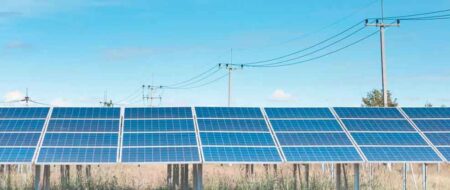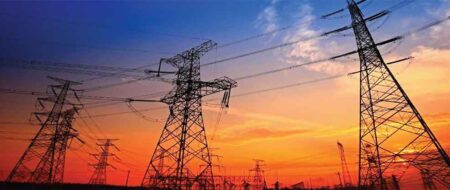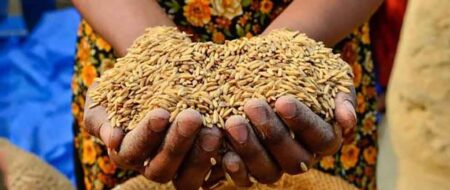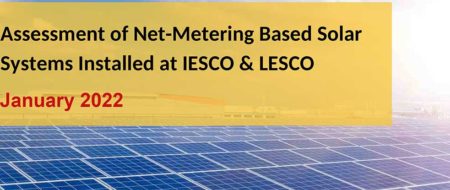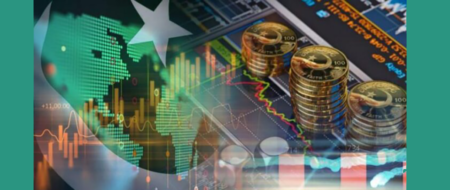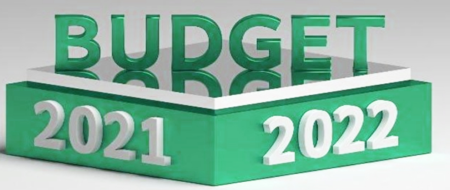National Economic Growth: Present Realities and Critical Elements for Future Sustainable Development
Former Finance Minister’s keynote address at IPS exploring the options and required strategies beyond borrowed time, fancied but shallow growth, conspicuous consumption and consumerism.
Policy Perspectives , Vlm. 5, No. 1
Any objective assessment of the true state of the Pakistan economy at this juncture will throw up many paradoxes and contradictions. The economic managers of the past eight years are claiming enormous success in achieving economic recovery, attracting foreign investment and building up large foreign exchange reserves. But critics point to high inflation, rising unemployment and growing inequalities, and also emphasize that the growth achieved in recent years is not sustainable.
There is always some gap in the achievements claimed by different governments and the assessment of their critics, but we have hardly ever seen as wide a gulf as exists today in perceptions about the state of the economy. This is why it is important to make an objective assessment. Such an assessment would naturally lead to the identification of the critical elements that are required for sustainable growth and for the inclusive development necessary for improving the quality of life of the common man.
The Balance Sheet
The positive side of the economic balance sheet is well known:
- Average GDP growth of 6.5-7 percent per annum in 2004-2007, based on industrial growth of 8 percent and agricultural growth of 4.5-5 percent;
- A significant increase in the flow of foreign assistance and private foreign investment ($8.3 billion in 2006-07) leading to a record level of foreign exchange reserves ($16 billion in 2007); and
- Increase in the investment-GDP ratio to 2.3 percent.
A careful analysis of these positive developments would show that these higher growth rates were largely the result of a confluence of certain favorable external factors and not due to any significant improvements in the internal structure of the economy. Pakistan is not, therefore, on a sustainable trajectory of high growth, as is claimed by the present economic managers.
The most important factor in Pakistan’s economic recovery was, no doubt, the circumstances following the events of September 11, 2001. As Pakistan assumed a wide range of dangerous responsibilities for the international campaign against terrorism, it received substantial amounts of bilateral and multilateral assistance (about $20 million in six years since 9/11). Pakistan’s debt was unscheduled for 28 years, providing relief of about $1 billion a year in debt servicing or $6 billion in six years.
As the foreign bank accounts of Muslims in Western countries came under scrutiny after 9/11, Pakistanis started repatriating their foreign accounts back to Pakistan, mainly through official channels. As a result, remittances went up from about $1 billion in 2000-01 to $4-5 billion in years after 9/11, adding up to about $25 billion in the past six years.
Many private investors in the Middle East also felt that it would be safer for them to invest a part of their surplus capital in a neighboring Islamic country than in Europe and America. Partly for this reason and partly due to the relative political stability that only military governments in Pakistan seem to provide, about $15 billion worth of private investment was attracted mainly in the telecommunication, oil and gas, real estate and construction, and financial sectors in the past six years.
This exceptionally large capital inflow of about $60-65 billion in the six-year period after 9/11, averaging about 8 percent of the GDP, has added at least 2 percentage points to the rate of growth during this period. Another 1-1.5 percent has come from recovery in the agriculture sector following the drought cycle of 2000-02.
What are the prospects that these exceptional factors, which pushed up the growth rate from an average of 4.5 percent in the 1990s to about 7 percent in 2003-07, will continue?
The agriculture sector, having experienced a favorable weather cycle, could slide into a trough in at least two of the coming five years. Similarly, some decline in foreign flows is inevitable because very few large-scale privatization options, like the Pakistan Telecommunication Company Limited (PTCL) or some of the large banks, are in the pipeline.
There are also other negative factors that could adversely influence the economic prospects in the coming years. These include an unprecedented trade deficit, continuing inflation and the prospect of a decline in the real estate market. These problems of macroeconomic slippages are the direct result of the current regime’s policy of stimulating growth through excess liquidity and a lower interest rate in import-intensive consumption sectors like automobiles, cell phones, and other consumer durables.
In this context, it would be useful to recall the experience of other countries, like India, China and Brazil, who enjoyed a similar fiscal boom, generated by an increase in global liquidity, during this period. They expanded their high-value productive sectors with export potentials to provide a stronger base for sustained growth. In comparison, the exceptional capital flows in Pakistan went largely into consumption rather than investment, through consumer financing and through speculative investment in real estate or construction. This strategy has not only increased inequalities between the rich and poor and between urban and rural areas, but it has also created future liabilities that the country will have to meet on account of dividends and profits that the new foreign investors will repatriate in foreign exchange on their investment in privatized banks and projects like hotels and plazas.
There are many other pressures that are building up. With no new investment in new power plants, there is a serious energy shortage that is not only affecting the lives of the common man but also increasing the cost of doing business. The increase in global petroleum prices has compounded the fiscal problems of the government. The domestic mismanagement of the wheat situation has coincided with a record increase in international wheat prices, leading to an unprecedented atta crisis in the country. The political uncertainty, which is inevitable at the time of a general election, is also taking its toll .
Critical Elements
The new government which will take over after the general elections in 2008 will not find it easy to deal with the multiplicity of problems it will inherit from the past — double-digit food inflation, rising trade deficit, energy crises and growing unemployment. But it must move quickly to address the structural weaknesses that have to be overcome if a sustainable growth rate of over 7 percent is to be achieved in the coming years:
- In the short run, special attention must be paid to the agriculture sector and within agriculture to high-value food crops like pulses, edible oils, and vegetables, especially to the supply chain of transport, storage, processing and marketing. Improvements in these sub-sectors will not only sustain the growth rate but also help to curb inflation.
- In the medium term, serious deficiencies in infrastructure must be addressed especially electricity, port facilities and railways.
- In the industrial sector, new sub-sectors with comparative advantage and export potential must be identified to reduce Pakistan’s dependence on the textile sector for its exports and to provide gainful employment to people in rural areas.
- The domestic saving rate must be increased to reduce Pakistan’s dependence on external flows. Currently, while the investment rate has increased to 23 percent, the domestic saving rate is only 17 percent. New institutions that can channel pension funds and attract equity, in the housing sector, for example, would be needed.
- Ecologically sound development policies must be followed to preserve and develop the country’s land, water and forest resources to, inter alia, counteract the impact of global warming.
- Finally, Pakistan’s best resource for sustained growth is its human capital. Every secondary school in Pakistan should become a skill training center. Moreover, improved primary health care can ensure that the time for which almost every breadwinner in a poor family is sick is halved from 60 to 30 days in a year.
While sustaining the growth rate is important, it is even more critical that the growth is inclusive and benefits the poorer segments of the population. The poor have not been able to benefit significantly from the recent spurt in economic growth due to several negative factors, including a skewed pattern of land distribution, lack of skills or income generating assets like livestock, adverse terms of trade for agriculture, oppressive governing structure at the local level, and discrimination against many poor households due to ethnic or sectarian differences. Today, 60 percent of the people do not receive clean drinking water and 80 percent live in unhygienic conditions.
A viable poverty reduction strategy will have to be implemented to reverse the vicious circle of these unfavorable social and economic factors through a series of measures and policies that include the following elements:
- Enhanced ownership of or access to land for the poor in rural areas through feasible land reforms and allotment of new land mainly to poor households;
- Enhanced ownership by the poor of livestock through provision of micro-credit on a substantial scale;
- Greater home ownership for low-income households;
- Further improvements in the agricultural terms of trade to ensure that the prices that farmers pay for agricultural inputs do not rise faster than the prices that farmers, especially small farmers, receive for their output;
- Reasonable and stable food prices;
- Higher proportion of direct taxes in total tax revenues;
- Enhanced real wages for workers in urban and rural areas; and
- Special attention to education and skill development in low-income households.
Finally, an open democratic system is more responsive to the needs and aspirations of the poor. As a famous writer said: “No democracy with a free press has ever experienced a major famine.” Unless people are governed with their consent and on the basis of a fair social contract between the state and society, longer-term political stability cannot be assured. This is why sustained democracy is necessary for equitable and inclusive growth.




